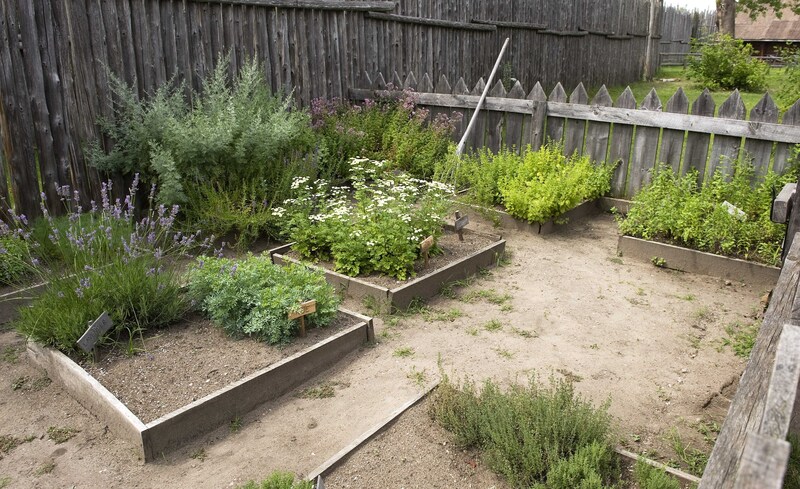Robust Gardens: Defense Tactics for Severe Weather
Posted on 04/09/2025
Robust Gardens: Defense Tactics for Severe Weather
Introduction: The Need for Resilient Gardens
In recent years, climate change and unpredictable weather patterns have presented new challenges to gardeners worldwide. Robust gardens are no longer a luxury but a necessity for those aiming to protect their green sanctuaries from extreme conditions like torrential downpours, heatwaves, storms, and cold snaps. This comprehensive guide delves into effective garden defense tactics for severe weather, helping you safeguard your plant investments and promote garden resilience all year round.

Understanding the Impact of Severe Weather on Gardens
Before implementing defense strategies, it's vital to understand how severe weather threatens plant health and garden infrastructure:
- Heavy Rainfall: Can lead to root rot, soil erosion, and nutrient leaching.
- Drought & Heatwaves: Cause wilting, sunburn, and decreased yields.
- Strong Winds: Break stems, uproot plants, and damage structures.
- Frost & Freeze: Kill tender plants and damage perennials.
- Hailstorms: Shred leaves and bruise fruit.
Strategies for Creating a Resilient, Robust Garden
Building a robust garden involves preparing for multiple threats. Here are proven strategies for making your garden more resistant to severe weather:
1. Choosing Weather-Resilient Plants
Selecting the right plants is the foundation of any robust garden:
- Native species: They are naturally adapted to local weather extremes.
- Drought-tolerant varieties: Such as lavender, sedum, and Russian sage, thrive with minimal water.
- Wind-resistant trees and shrubs: Compact, deep-rooted species like holly, oak, or wax myrtle can withstand stronger gusts.
- Flood-tolerant species: Willow, dogwood, and some ornamental grasses endure periods of standing water.
When starting a garden or planning expansions, always research and prioritize plants known for their weather resistance.
2. Soil Management: The Core of Defense
Healthy soil supports robust root systems that help plants withstand both drought and flooding. Soil management techniques include:
- Organic matter incorporation: Add compost or manure to boost water retention and drainage.
- Mulching: Use shredded leaves, straw, or bark to insulate soil, reduce evaporation, and suppress weeds.
- Raised beds: Improve drainage in areas prone to heavy rain or flooding.
- Soil testing: Ensures optimal pH and nutrient levels for plant growth.
3. Garden Design: The Layout Matters
Well-planned garden layouts mitigate weather risks:
- Windbreaks: Planting dense hedges or installing fences on the windward side reduces wind speed & protects vulnerable crops.
- Terracing and contour gardening: Slow down water runoff and soil erosion on slopes.
- Swales and rain gardens: Capture excess rainwater, allowing it to soak slowly into the ground.
- Strategic plant placement: Place tender or shade-loving plants closer to buildings for warmth and protection.
4. Structural Defenses: Physical Protection for Your Garden
Don't underestimate the value of structures in robust gardens:
- Row covers and cloches: Shield seedlings from cold or hail.
- Cold frames and greenhouses: Offer year-round protection from frost, wind, and heavy rain.
- Support stakes and cages: Prevent toppling during storms for tomatoes, beans, and tall flowers.
- Shade cloths: Prevent scorching and water loss in heatwaves.
Always anchor outdoor structures securely to withstand strong winds and avoid further damage.
Water Management: Defense Against Droughts and Floods
1. Smart Irrigation Practices
Maintain robust gardens during dry spells with efficient watering methods:
- Drip irrigation and soaker hoses: Deliver water directly to roots, minimizing waste.
- Timing: Water early in the morning or late in the evening to reduce evaporation loss.
- Moisture sensors: Automate watering based on soil moisture, not the clock.
2. Flood Defense Tactics
Gardens can withstand heavy rain with proper drainage solutions:
- French drains: Divert excess water away from plant beds.
- Elevated beds or planters: Protect delicate roots from standing water.
- Permeable paving: Hard surfaces that allow water infiltration reduce runoff and pooling.
Protecting Gardens from High Winds and Storms
Severe winds often accompany storms, hurricanes, and tornadoes. Here's how to make your garden storm-resistant:
- Windbreak installation: Use a two-tier combination of dense hedges and sturdy fences.
- Anchor movable garden objects: Secure garden furniture, trellises, and decorations to prevent them from becoming hazards.
- Staking tall plants: Use deep support stakes for sunflowers, tomatoes, and other top-heavy species.
- Prune trees and shrubs: Remove weak branches to minimize breakage and airborne debris.
After the storm, always inspect for any damage and act quickly to rescue or stabilize affected plants.
Mitigating Cold Snaps and Unexpected Frost
Frost events can devastate tender crops and disrupt garden productivity. Implement:
- Row covers or frost blankets: Swiftly deploy over beds when frost is forecasted.
- Mulch deeply: Protects root zones of perennials from freezing temperatures.
- Water before a freeze: Moist soil retains heat longer than dry soil.
- Move container plants indoors: Or group together against a south-facing wall for warmth.
Regularly monitor local weather alerts during transitional seasons for best results.
Combating Extreme Heat in the Robust Garden
Dealing with extreme heat requires proactive measures:
- Install shade sails or garden fabric: Reduces sunlight exposure during heatwaves.
- Water wisely: Focus on deep, infrequent watering and avoid wetting leaves to prevent sunburn.
- Use reflective mulches: Such as straw or white stones to keep soil cool.
- Choose heat-resistant cultivars: Look for disease- and drought-tolerant varieties from seed suppliers.
Keeping your robust garden hydrated and cool is crucial for sustaining growth and productivity.
After the Storm: Recovery Steps for Your Robust Garden
Sometimes, despite the best garden defense tactics for severe weather, damage occurs. Post-storm, act quickly:
- Assess and document damage: Take photos and notes for insurance or future improvements.
- Remove debris and broken stems: To prevent mold and pests.
- Re-establish supports: Straighten tilted plants and reset stakes or cages.
- Prune judiciously: Remove only damaged parts to promote recovery.
- Replenish mulch and soil: Restore insulation and nutrients lost to erosion.
Recovery is a process, and patience, along with continued care, is essential.
Long-Term Planning for a Weather-Resistant Garden
Developing a truly robust garden is about more than reacting to immediate threats; it's about building resilience over the long term. Here are strategies to future-proof your garden:
- Continuous learning: Stay updated on local climate forecasts and new resilient plant varieties.
- Soil enrichment: Consistently add organic matter and foster beneficial soil organisms.
- Diverse plantings: A variety of species prevents total loss during any one extreme event.
- Integrated pest management: Strong plants can better resist disease outbreaks exacerbated by weather shifts.
- Community networking: Share knowledge, resources, and experiences with fellow gardeners adapting to severe weather.
Adaptation is key: What works for your robust garden may evolve as weather trends shift in your region. Be prepared to review and refine your defense tactics regularly.

Essential Tools and Products for Weather-Proof Gardens
Arm your robust garden with these helpful tools and supplies:
- Heavy-duty garden stakes and plant ties
- Weatherproof mulch covers
- Soil testing kits
- Watering timers and moisture sensors
- Portable cold frames or pop-up greenhouses
- Shade netting and thermal blankets
Investing in durable, high-quality equipment pays off during weather emergencies.
Summary: Create a Weather-Ready, Resilient Garden
Surviving and thriving in the face of modern climate challenges requires commitment to creating a robust garden. By choosing weather-resistant plants, managing soil, designing smart layouts, using structural defenses, and preparing for both drought and deluge, you position your garden for year-round health. Proactively adapting your defense tactics for severe weather ensures that you enjoy lush foliage, vibrant blooms, and bountiful harvests--no matter what Mother Nature throws your way.
Remember: The best defense is a resilient plan. Start building your robust, weather-proof garden today and enjoy peace of mind tomorrow.

